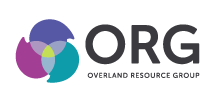
Day in, day out. You hope things will get better. Hope the seemingly constant tide of issues will finally subside. Hope your team will learn to work together. Hope the people problems will stop sabotaging productivity. Hope to actually have time to do what you are best at, the work you love to do.”
Here’s the problem: Hope is not strategy.
Sure, it’s human nature to hope things get better. And there’s nothing wrong with hope, but it takes more than that to make a change.
You need a solid strategy. One that’s powered by more than hope. It’s time to take action.
REALIZING THE NEED FOR CHANGE
Are you the brave leader your organization desperately needs? One that’s willing to call it like it is and admit things aren’t working? You can be the voice to challenge the status-quo, convert wishful thinking into intentional activity, and proactively lead the organization toward a better tomorrow.
Trust Your Inclinations
Whether your organization simply has a few challenges to overcome or is plagued by dysfunctional systems, it can be tough to recognize the need for change. When you’re immersed in an environment, even poor conditions can be normalized. “It’s just the way things are.”
This is where hope does have a role. All it takes is the slightest inclination that things need to change—and can indeed change—to begin making a difference.
Now, you have to do something to make it happen. This is the best time to begin seeking help from someone outside the organization who can offer a fresh perspective. Even if you’re not completely convinced that you need it. When something doesn't feel right, that’s the time to act.
Keep putting it off and guess what? The problems don’t magically disappear. In fact, they often get worse.
The sooner you spot an issue, the easier it is to stop and change directions, before the problem snowballs into something much more difficult, expensive, and time-consuming to fix.
Business is Personal
Human emotions are often ignored or forgotten when making organizational decisions. When people use the excuse, “It's not personal, it’s just business,” they may be conveniently deceiving themselves.
High-level executives can lose touch with the intricacies of the organization as they focus on the bottom line, whereas supervisors and managers keep a finger on the pulse of the organization. They know what's going on with the process, culture, and workflows. But as information is filtered up, what’s actually going on may not be as apparent.
Of course, it doesn’t have to be this way. The best leaders (at all levels) stay involved and aware of what's happening in all aspects of the business, including the personal side of things.

Clarity from a Fresh Perspective
You view your organization through the lens of your experiences, as do your supervisors, co-leaders, and employees. An independent, third-party review can offer insights and information not readily noticeable or available to those within the organization.
Most leaders are challenged by a lack of time to accomplish everything on their to-do list. It’s unrealistic to think you can dedicate 100-percent of your time to deal with people challenges. When would you get anything else done?
Even if you set aside time for this, it’s unlikely that one person can be an expert in all areas. When you’re sick, you go to the doctor. When your car breaks, you see a mechanic. Consulting an expert can help you get a accurate diagnosis more quickly. Someone looking through an unbiased lens can more easily filter issues down to manageable, action items.
A PLAN WITH INTENT
The natural instinct many leaders follow is to develop a plan from within the organization and set goals to get there. But a great plan is only a great plan until the battle starts.
When challenged, people tend to go with what they know and default to what has served them well in the past. There are two problems with this: 1) You run the risk of simply repeating the past and winding up right back in the same mess; and 2) Things change, so what may have worked in the past, may not work for the current issue.
The Past is Not the Present
Following a “what got you here, will get you there” mentality may leave you stuck or settling for less. Oftentimes, the big opportunities that emerge from an organizational transformation reach far beyond what people thought was possible.
In this sense, you may be constrained by what you know and less likely to experiment or dream big in the face of adversity. Instead, breakthrough thinking is needed.
That’s where experts with a different set of experiences and vantage point can be valuable to help you think through things objectively and challenge you to stretch your goals and reach new heights.
Finding a new solution for a new day is part of a leader's responsibility. You have the opportunity to create a plan that brings about a remarkable transformation.

Focused Execution
Once you’ve recognized the need for change then developed an intentional plan, you face perhaps the biggest challenge of all: Getting everyone on board so you can successfully execute the plan.
Another benefit of bringing in an outside consultant is to help you shift any cavalier attitudes within your organization and create buy-in so everyone is on the same page when it’s time to put the plan in motion. It’s good to have some backup—someone who empathizes and is focused on helping you succeed, someone with experience in addressing various attitudes as well as navigating common pitfalls and challenges.
A partner frees you up to focus on what you do best, without jeopardizing the plan due to time constraints.
Over Communicate
What may seem obvious to you may not be as obvious to those without all of the information. You simply cannot communicate too much. Say it clearly, as many times in as many ways as it takes people to really hear it.
Create some buzz. Make everyone so aware of what’s happening that they feel like they’re missing out if they’re not part of it. Once they’ve heard the plan, almost to ad nauseum, they’ll likely be more than ready to step into the greener grass on the other side of the transformation—and happy to do whatever it takes to get there.
It’s crucial to keep communicating, every step of the way.
Adjust as Needed
As you implement your plan, it’s important to be flexible and make necessary adjustments in an appropriate way.
But be prepared for resistance, both to the initial changes and any adjustments. People may have certain expectations, and if you suddenly shift gears, they might assume the plan isn’t working or you’re not committed. Anticipate potential reactions and offer reassurance to head off negative speculation.

Meeting Daily Demands
Failure to adjust or consistently communicate can spell disaster for your plan, but how do you manage all of this while staying on top of business as usual? An experienced consultant can make sure you stay ahead of the curve to help navigate the tyranny of the immediate.
To keep things running, you have to meet daily demands—which can be especially high if your organization is not operating smoothly. Focusing on the transformation can become an extra burden, making it tempting to put your plan on hold. Instead, by relying on third-party support, you can meet all demands without feeling overloaded.
PURPOSEFULLY SUSTAINABLE
With a well-conceived plan, excellent execution, and a skilled transformation partner to help you keep everything running smoothly, you should be well on your way to a successful transformation.
The more quickly your organization can make the transformation, the better. Finally, everything you’ve been hoping for will be a reality. Imagine coming to a harmonious workplace every day, doing your best work, and meeting goals you only dreamed were possible.
All of this is not only entirely doable, but also perfectly sustainable.
It begins by choosing the right consultant who will guide you through every step of the process, teaching you how to maintain the momentum you create for future growth and success.
We can help. Contact ORG today.

